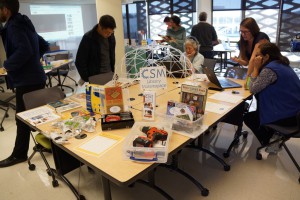There is a lot of advice out there for recent college grads and career veterans, from the Internet, mentors, professors, friends and family members. With so much career advice floating around out there, how can you tell which advice you can trust and which you should avoid? Here are three tips to avoid the bad advice and only take in what can help you become successful.
Be skeptical. If you’ve taken Next Step Academy’s “Introduction to Critical Thinking” course, then you know you should always question what you’re being told and check your sources. Whether you’re reading a book or a blog, take a look at the author and their credentials. What experience do they have? What makes them qualified to give career advice? Forbes, a reputable business news source, likely has better advice and credentials than someone’s personal blog.
Use multiple sources. You shouldn’t get all of your advice from a single source. A mentor may have a different perspective than a family member who has known you longer or an author who has more knowledge about your field of interest. Seek out a variety of trusted sources so you aren’t just blindly following in the footsteps of a single person.
Avoid the Yes-Man. We all want to surround ourselves with people that will support us throughout our careers, but this may not always be the best for your future. Having people in your life that approve of all of your ideas, even when they aren’t great ideas, can actually hinder your professional development. You need people in your life who can objectively tell you when something is a bad idea to help you learn and grow. Sometimes tough love can lead to the best advice.




 Write: Even if you don’t fancy yourself a ‘writer’, writing is an awesome tool for developing creativity. For non-writers, there are many ways to make writing work for you: idea books, mind maps, “100” lists, morning pages, and writing prompts are just some of the popular exercises. Many of these do not require proper grammar, spelling, or even full sentences. Think of these as streams of consciousness, as the words come to you, write them down, don’t second guess yourself—just write.
Write: Even if you don’t fancy yourself a ‘writer’, writing is an awesome tool for developing creativity. For non-writers, there are many ways to make writing work for you: idea books, mind maps, “100” lists, morning pages, and writing prompts are just some of the popular exercises. Many of these do not require proper grammar, spelling, or even full sentences. Think of these as streams of consciousness, as the words come to you, write them down, don’t second guess yourself—just write.